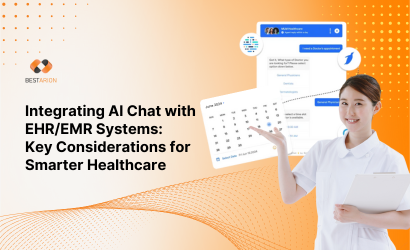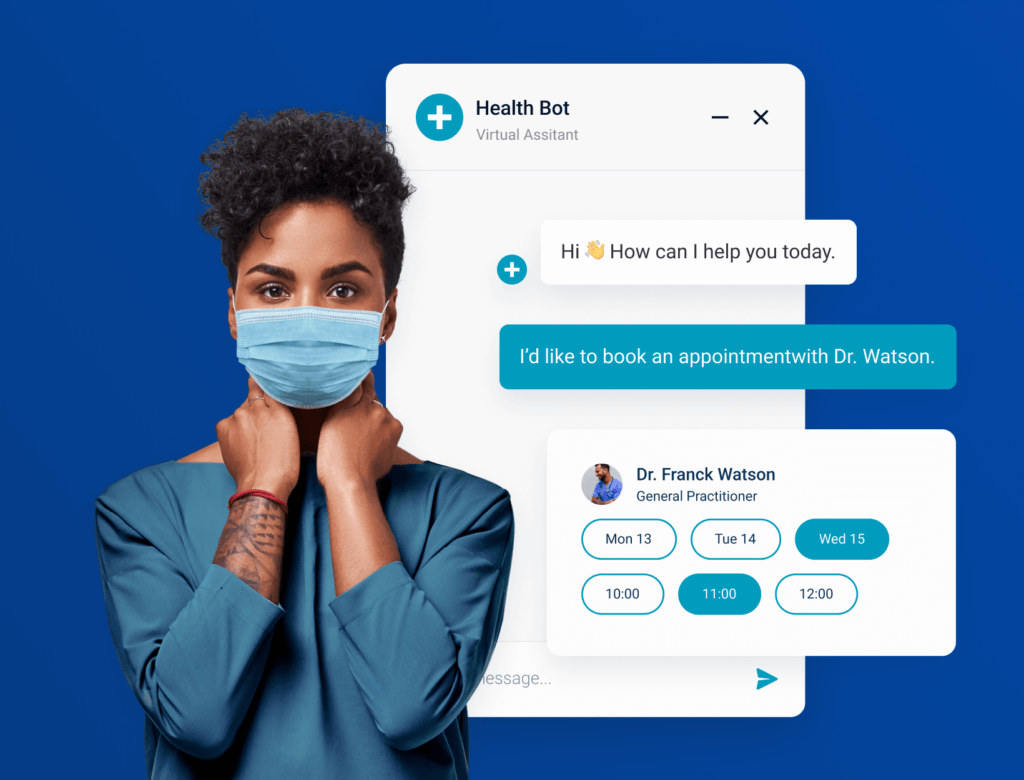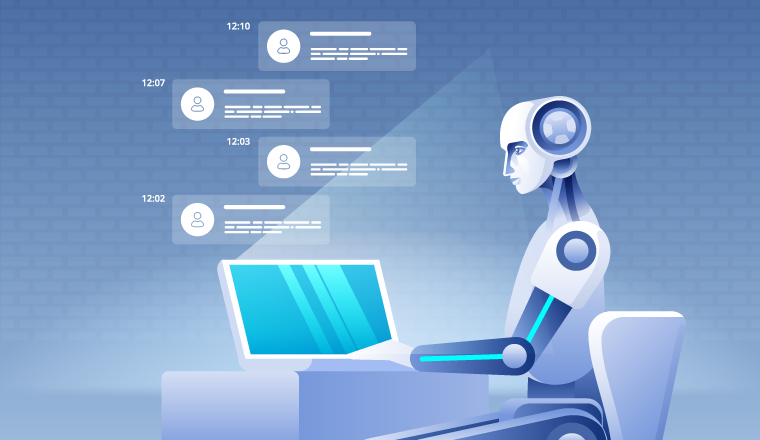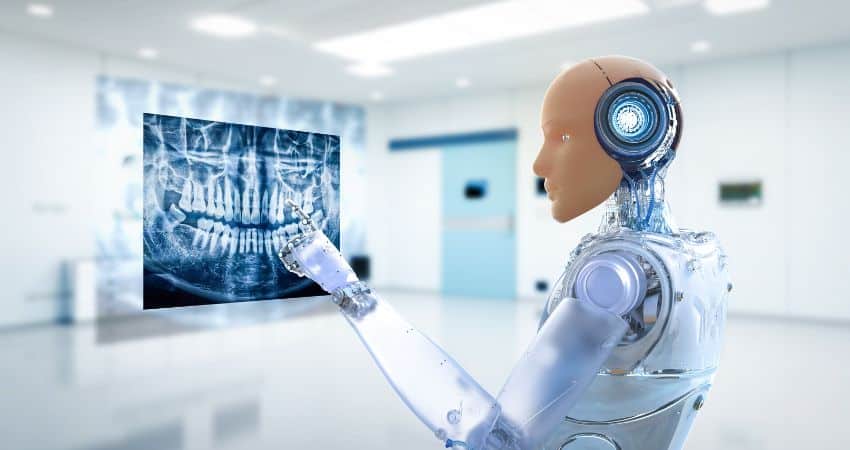Integrating AI Chat with EHR/EMR Systems: Key Considerations for Smarter Healthcare

In recent years, artificial intelligence (AI) has quietly worked its way into our daily lives—from voice assistants helping us check the weather to recommendation engines guiding our next Netflix binge. But one area where AI is making a particularly meaningful impact is healthcare. And among the many AI-driven innovations, AI chatbots are leading the charge toward more efficient, patient-centered care.
But here’s the kicker: AI chat alone isn’t enough. To truly make a difference, these intelligent systems need to be seamlessly integrated with Electronic Health Record (EHR) and Electronic Medical Record (EMR) systems. When done right, this combination can revolutionize how care is delivered—from improving patient communication to reducing provider burnout.
Let’s dive into what this integration really looks like, why it matters, and the practical things you need to consider before jumping in.
What Exactly Are AI Chatbots in Healthcare?

AI chatbots are virtual assistants powered by natural language processing (NLP) and machine learning. Think of them as digital front-desk assistants that never sleep. They can handle tasks like:
-
Scheduling appointments
-
Collecting patient history
-
Sending medication reminders
-
Answering insurance questions
-
Triage for non-urgent symptoms
When integrated with EHR/EMR systems, these bots go beyond just conversation. They pull in real-time patient data, help personalize responses, and even assist providers with clinical decision-making.
Understanding EHR vs. EMR
Before diving into integration, it’s important to distinguish between EHR and EMR:
-
Electronic Medical Records (EMR): Digital versions of paper charts in a clinician’s office, focused on diagnosis and treatment.
-
Electronic Health Records (EHR): A broader system that shares information across multiple healthcare providers and includes lab results, prescriptions, and full medical histories.
Integration with AI chat is more impactful when done with EHR systems due to their interoperability and holistic view of the patient.
Why Integrate AI Chat with EHR/EMR Systems?
1. Enhanced Patient Engagement
AI chat interfaces allow patients to interact with their healthcare providers 24/7, increasing access and satisfaction.
2. Reduced Administrative Burden
Tasks like appointment booking, prescription refill requests, and insurance inquiries can be automated, freeing up staff for more critical tasks.
3. Real-time Clinical Support
Clinicians can receive alerts, patient summaries, and clinical decision support through AI-driven interfaces, improving care quality and outcomes.
4. Improved Data Accuracy
AI chatbots can collect structured data from patients in advance of their appointments, ensuring cleaner inputs into EHR/EMR systems.
Key Technical Considerations for Integration
1. API and Interoperability Standards
Modern EHR systems often support RESTful APIs and follow interoperability standards like HL7 FHIR (Fast Healthcare Interoperability Resources). When building or choosing an AI chat solution, ensure:
-
Support for FHIR resources like Patient, Appointment, Observation, and MedicationRequest.
-
Compatibility with OAuth2 for secure authorization.
-
Use of JSON format for easy data exchange.
Pro Tip: Work with EHR vendors that offer sandbox environments for testing integrations.
2. Natural Language Processing Capabilities
Robust NLP is essential for the chatbot to understand and respond to varied patient inputs. Key NLP capabilities should include:
-
Named Entity Recognition (NER) to identify patient-relevant information.
-
Intent classification to determine what action the user wants to take.
-
Context management to handle ongoing multi-turn conversations.
An NLP engine trained specifically on healthcare data will outperform general-purpose models.
3. Scalability and Load Handling
Healthcare applications must handle spikes in user traffic, especially during emergencies or pandemics. The AI chat platform should support:
-
Horizontal scaling (adding servers to handle increased load).
-
Cloud-native architecture for reliability and uptime.
-
Asynchronous processing for long-running tasks (e.g., fetching lab results).
4. Data Synchronization
Synchronizing data between the AI chat platform and the EHR/EMR system in real-time is critical. This involves:
-
Managing timestamps to prevent conflicting updates.
-
Implementing queues or message brokers (like Kafka) for reliable event delivery.
-
Building fallback mechanisms in case of downtime or latency issues.
Don’t Forget Security and Compliance
When dealing with healthcare data, the stakes are high. You’re not just building a cool tool—you’re protecting people’s personal health information.
1. HIPAA Compliance Is Non-Negotiable
Make sure your AI chatbot and your integration meet all HIPAA requirements, including:
-
End-to-end encryption
-
Access controls and audit trails
-
Signed Business Associate Agreements (BAAs)
2. Secure Authentication for All Users
Patients, providers, and staff should all have secure logins. Consider:
-
Single sign-on (SSO)
-
Multi-factor authentication (MFA)
-
Role-based access control (RBAC)
3. Protecting Sensitive Data
For AI model training or data analytics, use de-identified or anonymized data. It keeps patient info safe while still allowing you to improve your system.
Key Functional Use Cases of AI Chat-EHR Integration
1. Pre-Visit Data Collection
Before appointments, AI chatbots can collect information such as:
-
Reason for visit
-
Medication usage
-
Allergies and symptoms
-
Insurance verification
This data can then populate EHR fields, saving clinicians time.
2. Follow-Up and Care Management
Post-visit chat interactions can:
-
Remind patients about medications
-
Schedule follow-up visits
-
Share test results with explanations
-
Monitor symptoms for chronic diseases
All interactions are logged in the EHR to ensure continuity of care.
3. Chronic Disease Monitoring
For conditions like diabetes, hypertension, or asthma, AI chatbots can:
-
Prompt patients to input daily readings
-
Provide lifestyle coaching
-
Alert providers if values go out of range
This keeps patients engaged and reduces emergency visits.
4. Mental Health Support
AI chat systems can provide mental health check-ins using validated questionnaires (e.g., PHQ-9, GAD-7) and escalate to professionals when necessary.
Integration Challenges and How to Overcome Them
1. Fragmented EHR Ecosystems
Challenge: Healthcare systems often use multiple, non-standard EHR systems.
Solution: Focus on FHIR-based integration. Use middleware or iPaaS (Integration Platform as a Service) solutions to standardize data flow.
2. Clinical Resistance and Workflow Disruption
Challenge: Clinicians may resist using a chatbot due to unfamiliarity or concerns over workflow interruptions.
Solution: Conduct pilot programs with clinician feedback loops. Make chatbot data entry seamless and non-intrusive within the EHR UI.
3. Bias in AI Algorithms
Challenge: AI systems trained on biased datasets can produce unequal treatment recommendations.
Solution: Continuously audit algorithms for fairness. Incorporate diverse datasets and include clinical oversight.
4. Delayed Response or Downtime
Challenge: System outages or slow performance can reduce trust in AI tools.
Solution: Use redundant infrastructure, auto-scaling cloud services, and constant monitoring with alert systems.
Choosing the Right Platform: A Quick Checklist
Here’s what to look for when evaluating AI chatbot platforms for integration with EHR/EMR:
-
FHIR and HL7 support
-
HIPAA and GDPR compliance
-
Real-time API access
-
Customizable chatbot flows
-
Compatible with Epic, Cerner, Allscripts, etc.
-
Built-in analytics and monitoring
-
Strong NLP engine tailored to healthcare
Future Outlook: Where Is This Heading?
The convergence of AI and EHR/EMR systems is still evolving. Here are some trends to watch:
-
Voice-Activated EHR Interactions: Providers dictating notes or receiving patient summaries using voice AI.
-
Generative AI Summarization: Chatbots generating visit summaries or draft prescriptions based on conversation history.
-
Patient Digital Twins: Combining real-time chat data, EHR history, and wearable data to create a digital twin for precision medicine.
-
Multilingual NLP: Breaking language barriers with AI chat that supports regional dialects and languages.
-
AI-Powered Clinical Trials Matching: Automatically suggesting eligible studies to patients based on EHR data and chatbot interactions.
Final Thoughts
Integrating AI chat with EHR and EMR systems isn’t just about automation—it’s about building a smarter, more responsive healthcare system that works better for everyone. Whether you’re a hospital administrator, CTO, or digital health startup, the path forward includes both technical savvy and a deep commitment to patient privacy, safety, and experience.
Start small, test thoroughly, and always keep your end-users—patients and clinicians—at the heart of your design. With the right strategy, AI chat + EHR integration can take your healthcare delivery to the next level.



